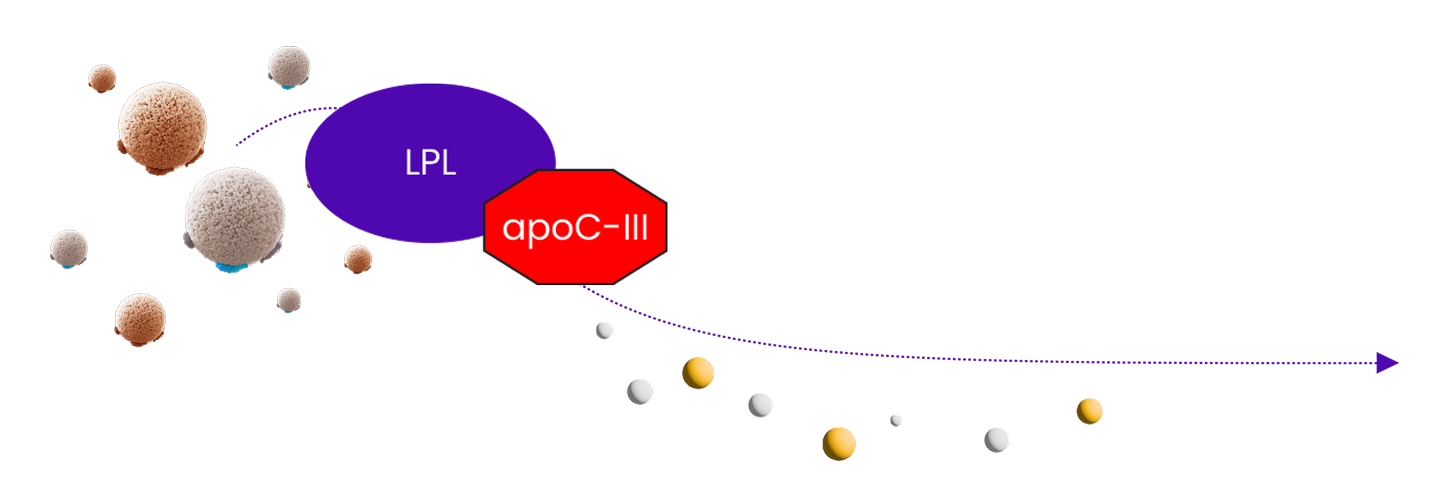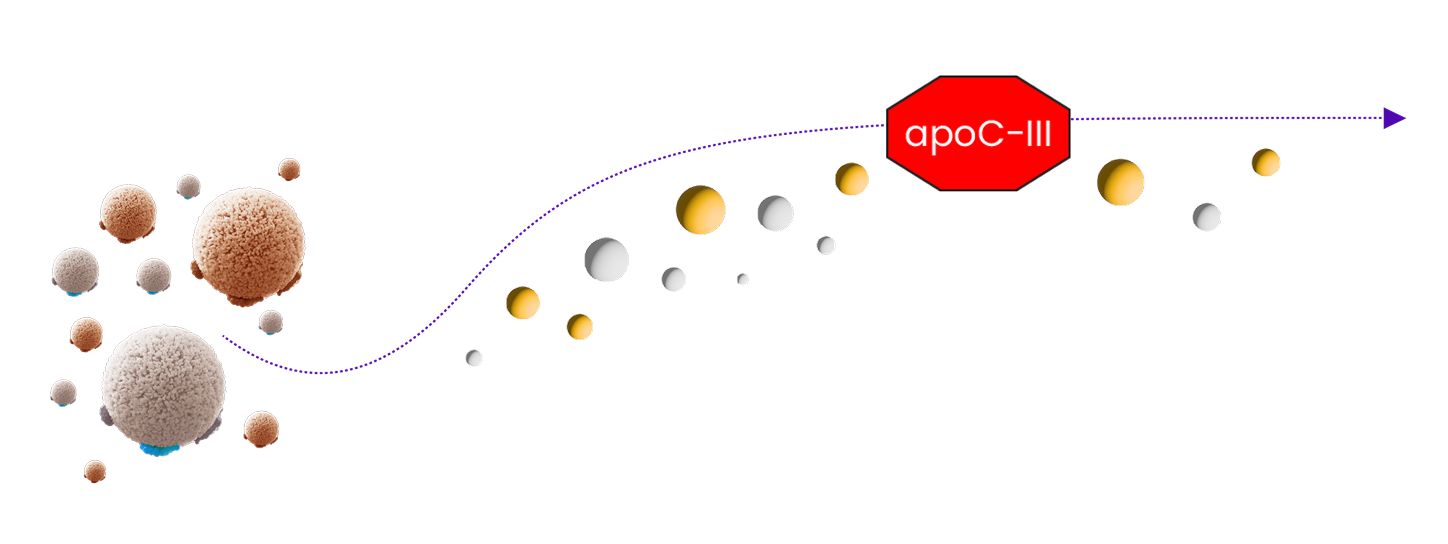Behind the science
Apolipoprotein C-III (apoC-III) is a protein made in the liver that slows down a person's ability to clear dietary fat, like triglycerides, from their bloodstream.
Pathways for triglyceride clearance
ApoC-III helps control triglyceride levels through 2 pathways:
The LPL-dependent pathway is where lipoprotein lipase (LPL), a key enzyme, breaks down triglycerides in the blood.

The LPL-independent pathway is where triglycerides are cleared by the liver, without the use of LPL.

TRYNGOLZA is a GalNAc-conjugated antisense oligonucleotide (ASO) inhibitor of apoC-III production.
ASOs are single-stranded DNA fragments designed to bind to and interfere with mRNA, the template used to make proteins like apoC-III.
GalNAc is a molecule that recognizes and binds to receptors most commonly found on liver cells.
TRYNGOLZA in action
1
Targeting liver cells
GalNAc in TRYNGOLZA enables targeted delivery of TRYNGOLZA to the liver, where apoC-III is made.
2
Selectively binding to apoC-III mRNA
After binding to the cell, TRYNGOLZA is brought into the cell and the ASO binds to the apoC-III mRNA.
3
Breaking down apoC-III mRNA
The binding of TRYNGOLZA leads to the breakdown of the apoC-III mRNA and reduces apoC-III in the blood, resulting in reduced triglyceride levels.
By reducing apoC-III—a key regulator of triglyceride metabolism in both the LPL-dependent and LPL-independent pathways—TRYNGOLZA can help people with FCS better break down triglycerides, lowering triglyceride levels in the blood.
GalNAc=N-acetylgalactosamine; mRNA=messenger ribonucleic acid.

